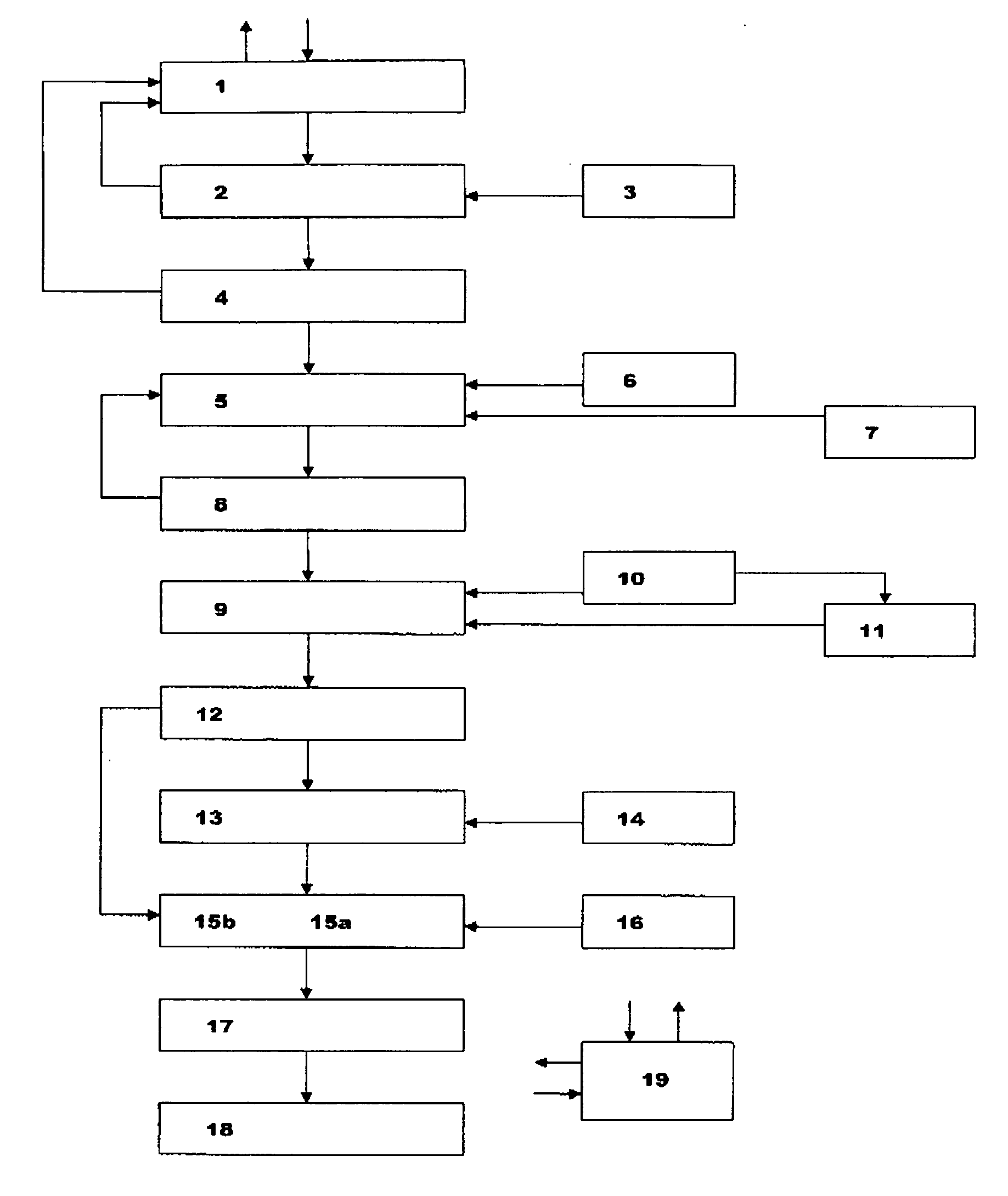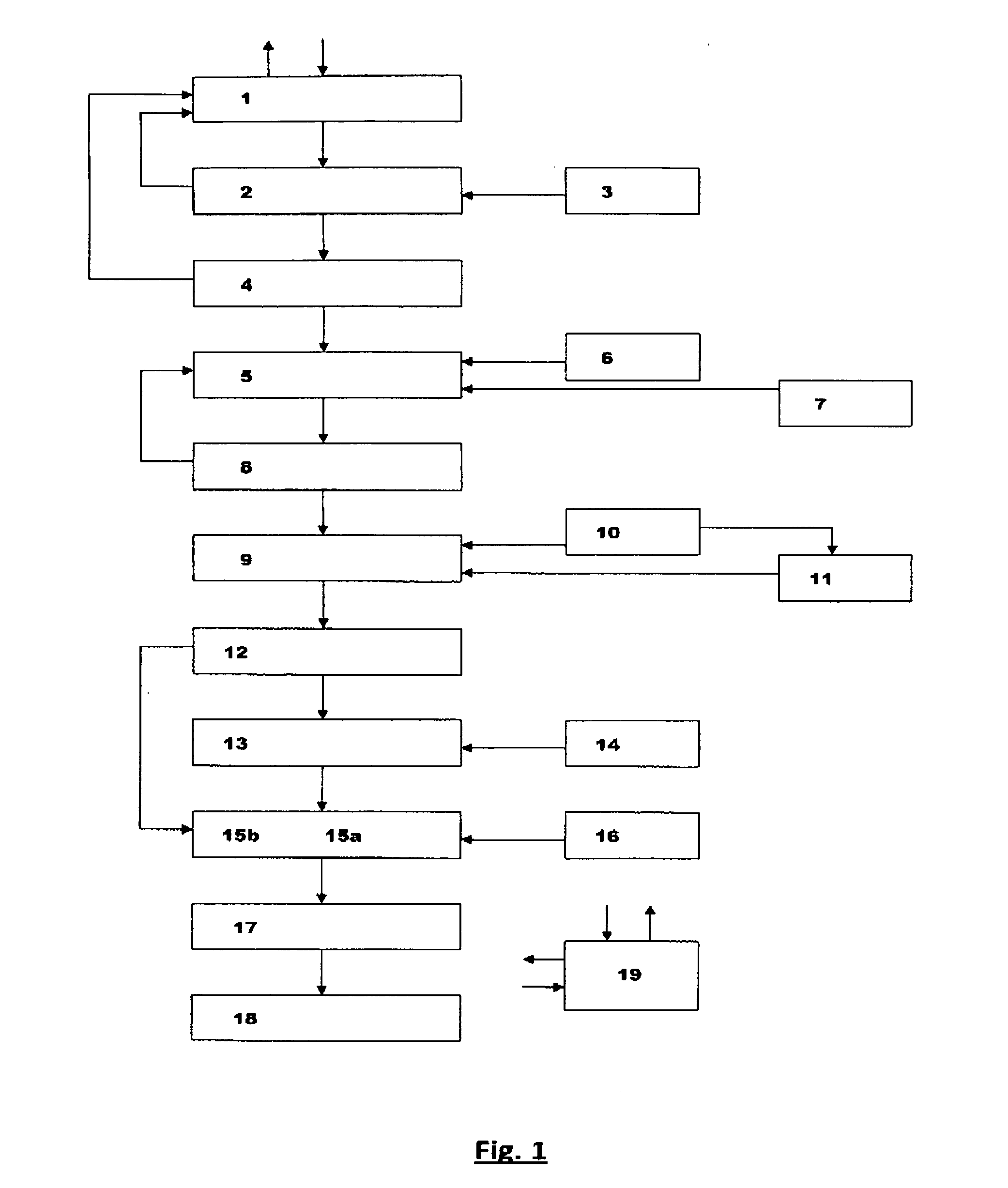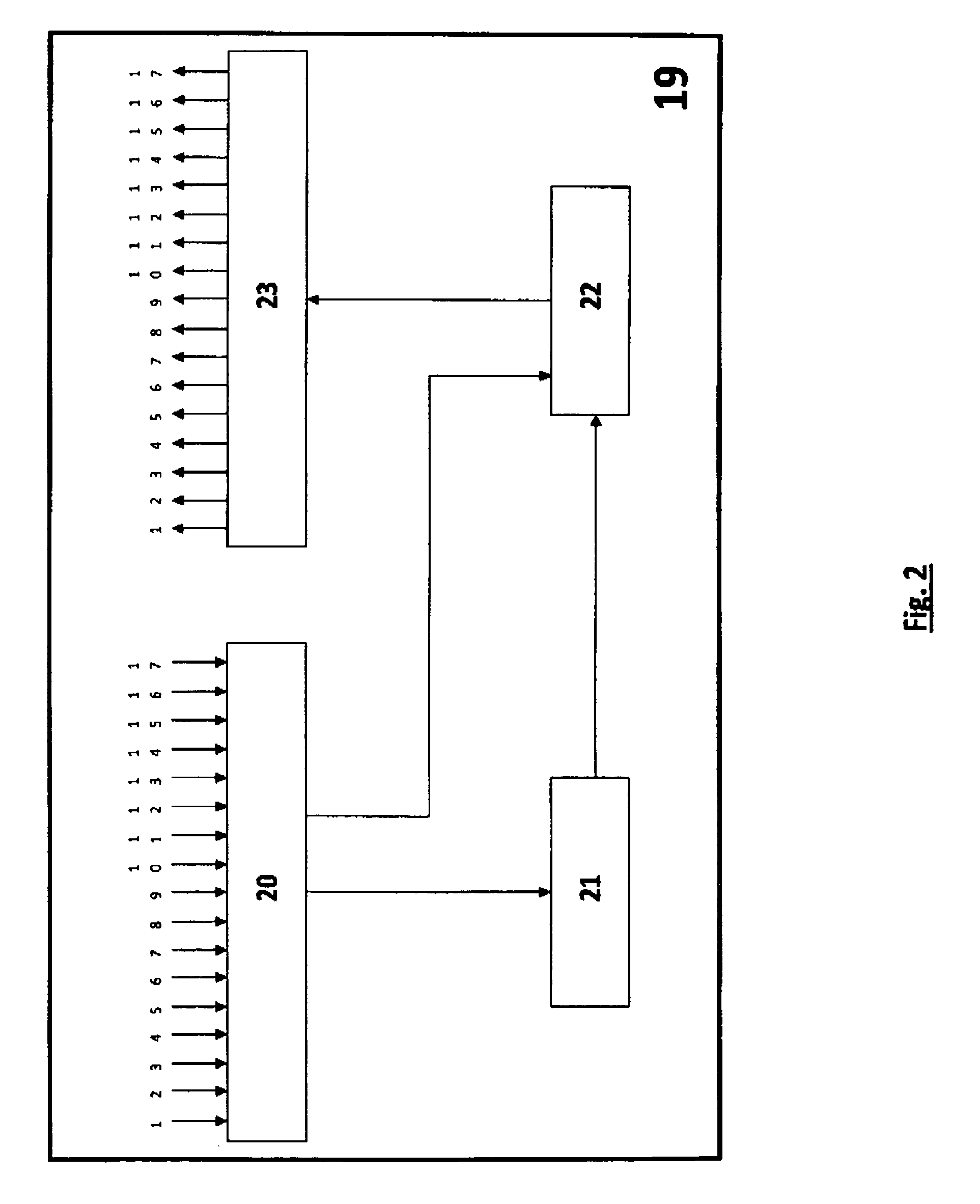Method and device for producing biomass of photosynthesizing microorganisms/phototrophical algae and biomass of these microorganisms pigments
a technology of microorganisms/phototrophical algae and biomass of these microorganisms, applied in the field of biotechnology, can solve the problems of high cost of end product and large amount of energy used
- Summary
- Abstract
- Description
- Claims
- Application Information
AI Technical Summary
Benefits of technology
Problems solved by technology
Method used
Image
Examples
example n1
[0052]Cultivation of microorganisms, in particular culture Haematococcus pluvialis, is known to have at least two phases:
[0053]production of microorganisms biomass;
[0054]production of pigment biomass, e.g. pigment Astaxanthin.
[0055]Known technologies for increasing microalgae biomass output such as changes in illumination. additional enrichment of cultivated medium with carbon dioxide gas and other nutrients, give insignificant biomass increase (from 7 to 12%) [25, 28, 59-65].
[0056]Laboratory experiments on microalgae irradiation by electromagnetic waves of mm range have shown significant biomass increase (for 250-410%). that's why electromagnetic radiation in mm range has been chosen as outer physical factor with electromagnetic radiation of microalgae being carried out at each stage of biotechnological process.
[0057]Experiments have been carried out by extracting samples of solutions directly from devices of an Israeli industrial installation (tubular bioreactor) for microalgae cu...
example no 2
[0079]
Value of photosynthetic activity of radiated and control algaein the process of growth (biomass, g / l)Culture ageRadiation timeCulture kinds(days)(min)Spirulina platensisPlatimonas viridis10300.250.1910600.120.25101200.100.20103600.04—10Control0.070.2020150.600.6120301.050.6120600.820.70201200.520.47203600.22—20Control0.460.4230152.521.0030304.251.1030600.811.20301200.520.72303600.22—30Control2.050.68Value of photosynthetic activity of radiated and non-radiated algae inthe process of growth (biomass, g / l)Culture kindsSpirulina platensisPlatimonas viridisCulture ageRadiation timenon-non-(days)(min)radiatedradiatedradiatedradiated10150.150.300.050.1610300.200.230.050.1810600.130.130.050.15101200.120.100.120.16103600.070.430.200.1620150.751.400.310.6020300.711.070.310.4720600.671.050.310.54201201.521.030.270.28203600.320.260.400.4030152.405.200.400.9130302.124.160.400.9230601.962.080.401.15301203.242.920.440.49303601.561.440.570.52
example no 3
[0080]
Resonance effect with radiation of Spirulina culture byelectromagnetic radiation of mm rangeExperiment variantsWavelength,power,Culture age (days)(mm)(mcWatt / cm2)102030pH6.952.430.110.400.649.867.001.750.210.781.209.937.050.800.260.951.509.977.101.400.240.851.2010.037.152.170.240.751.409.987.202.190.240.951.559.977.252.160.200.751.209.95
The analysis of data an example 3 shows, that depending on frequency of an irradiation the size of an increment of a biomass of algae is various at their identical stages of cultivation. Thus, at a stage of 10-20 days the greatest gain of a biomass at an irradiation on length of a wave of 7.20 mm, and at a stage of 20-30 days the greatest gain of a biomass at an irradiation on length of a wave of 7.15 mm.
[0081]The aim of optimizing microorganism cultivation process is to provide a stable increase in the mass of biosynthesis output products for several times and a decrease in expenditures for microorganism biosynthesis including microorganisms a...
PUM
 Login to View More
Login to View More Abstract
Description
Claims
Application Information
 Login to View More
Login to View More - R&D
- Intellectual Property
- Life Sciences
- Materials
- Tech Scout
- Unparalleled Data Quality
- Higher Quality Content
- 60% Fewer Hallucinations
Browse by: Latest US Patents, China's latest patents, Technical Efficacy Thesaurus, Application Domain, Technology Topic, Popular Technical Reports.
© 2025 PatSnap. All rights reserved.Legal|Privacy policy|Modern Slavery Act Transparency Statement|Sitemap|About US| Contact US: help@patsnap.com



